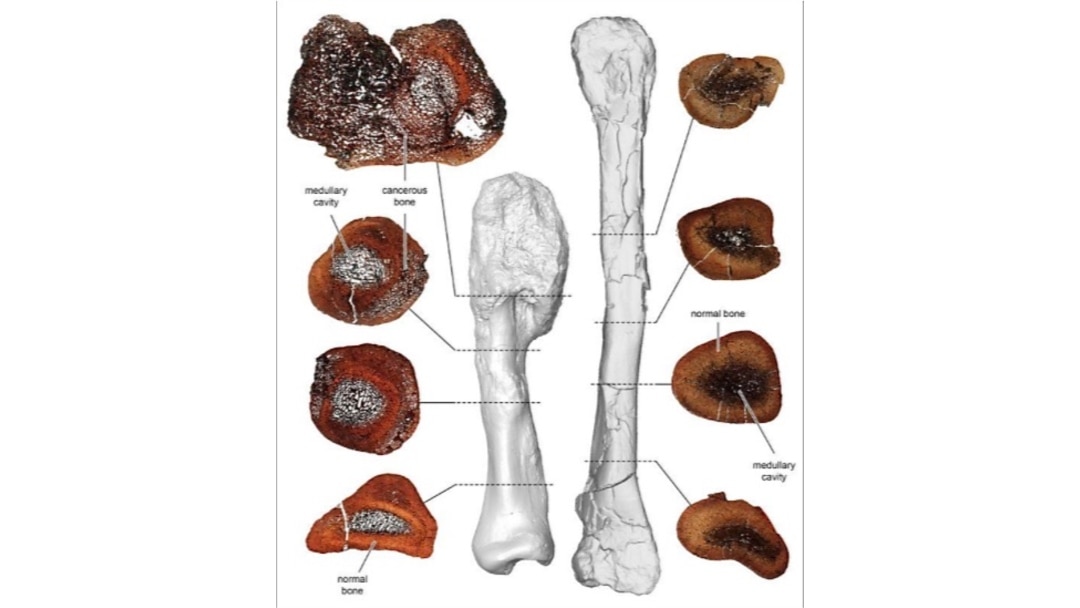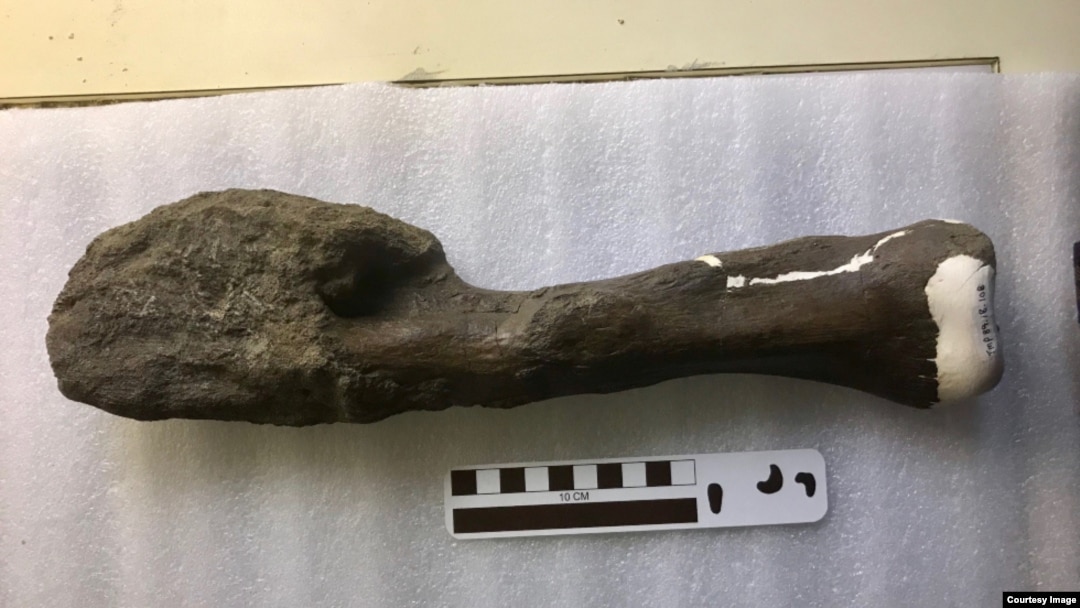Your browser doesn’t support HTML5
Scientists Discover First Evidence of Deadly Cancer in Dinosaur
Canadian researchers say they have discovered the first known case of a dinosaur suffering from a deadly cancer.
The evidence came from a fossil leg bone discovered in Alberta, Canada in 1989. The fossil was from a dinosaur called Centrosaurus. It was a four-legged plant eating animal about 6 meters long that lived between 76 and 77 million years ago.
Examinations of the fossil showed the lower leg bone, called the fibula, was badly malformed. The scientists thought this was likely caused during the healing process of a broken leg.
But new studies of the fossil led researchers to believe the malformation was probably caused by an aggressive bone cancer called osteosarcoma. The research team included medical professionals who study and diagnose cancers in humans.
The findings were recently reported in the medical publication Lancet Oncology.
The publication describes osteosarcoma as a severe and deadly bone cancer “with a worldwide incidence of 3.4 cases per million people per year.” The cancer often takes the form of a disorganized bone growth that generally strikes children or young adults. The cancer can spread through bones and to other organs.

A comparison between thin sections of the cancerous leg bone (L) and a normal fibula bone of the horned Centrosaurus is seen in this image released on August 3, 2020.
The researchers said the latest examinations of the fossil showed the dinosaur leg bone contained “a massive…tumor.”
They said they were able to confirm that the growth was a tumor by using computed tomography, or CT, images. CT technology uses X-rays and a computer to make detailed pictures of bones, organs and tissue inside the body.
The team compared a normal Centrosaurus fibula to the malformed one. They also compared the malformed dinosaur bone to a human fibula with a confirmed case of osteosarcoma. The comparisons led the researchers to confirm a likely case of osteosarcoma.
Experts say since most tumors form in soft tissue that does not easily fossilize, there is little evidence of cancer in the fossil record.
One of the project leaders was David Evans of the Royal Ontario Museum in Toronto. He spoke to Reuters news agency about the finding. He said one of the strongest pieces of evidence was that the cancer was also found in the outer layer of bone. This does not support the theory that the malformed leg was caused by a healed break.
“This remarkable find shows that no matter how big or powerful some dinosaurs may seem, they were affected by many of the same diseases we see in humans and other animals today, including cancer,” Evans said.
He added that the Centrosaurus linked to the fossil “was likely weak and lamed by the cancer” before its death. Cancer, however, may not have killed the dinosaur. Evans said the fossil was found in a large collection of Centrosaurus individuals. This suggests that they all died as a group after being caught in a flood.
Another lead researcher was Dr. Mark Crowther, a professor of medicine at McMaster University in Ontario. He said the new discovery was only made possible through the use of modern methods and an expert medical team representing several fields.
“Here, we show the unmistakable signature of advanced bone cancer in a 76-million-year-old horned dinosaur - the first of its kind. It’s very exciting,” Crowther said.
He added that the finding “speaks to the biology of cancer.” This means cancer is not new and probably has been happening through time as “an expected complication in all animals.”
Evans added that while dinosaurs might be seen as mythical creatures, “they were living, breathing animals that suffered through horrible injuries and diseases.”
I’m Bryan Lynn.
Reuters reported this story. Bryan Lynn adapted the report for VOA Learning English, with additional information from the Royal Ontario Museum and McMaster University. Mario Ritter, Jr. was the editor.
We want to hear from you. Write to us in the Comments section, and visit our Facebook page.
______________________________________________________________
Words in This Story
fossil – n. the mineralized remains of plants or animals that lived a long time ago
malformed – adj. not having the expected shape because of some problem affecting growth or development
tumor – n. a mass of tissue in the body that is made up of cells that are not normal
lame – adj. unable to walk normally
signature – n. a sign that confirms something’s identity
horn – n. a hardened growth on the head of some animals such as cattle, goats and sheep
complication – n. a health problem that arises in addition to an existing one
mythical – adj. imaginary, something told about in stories but that is not real


